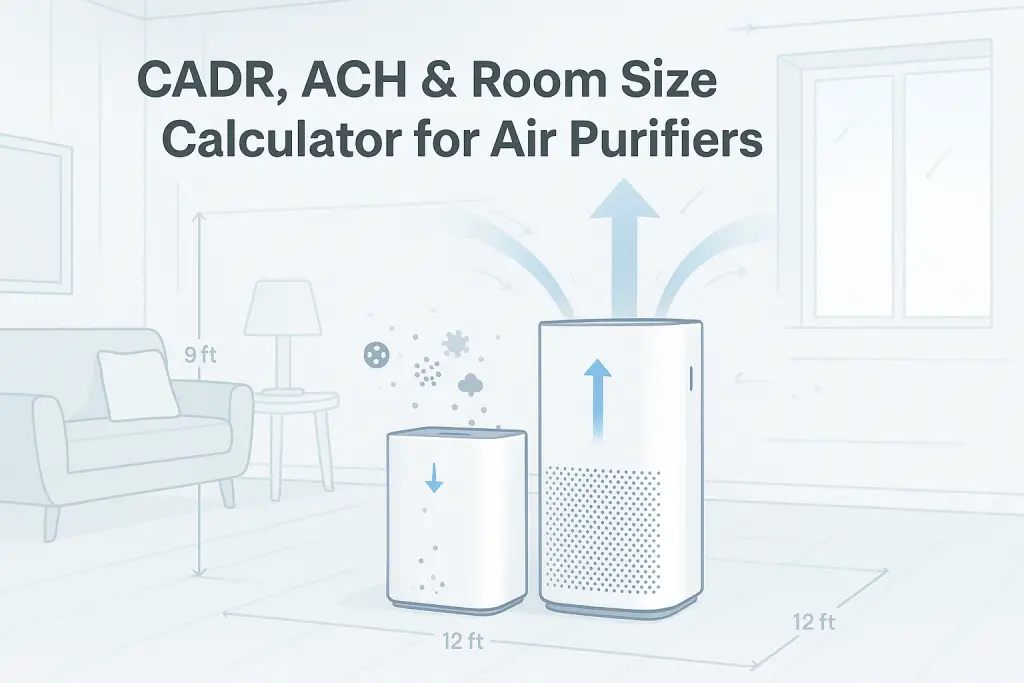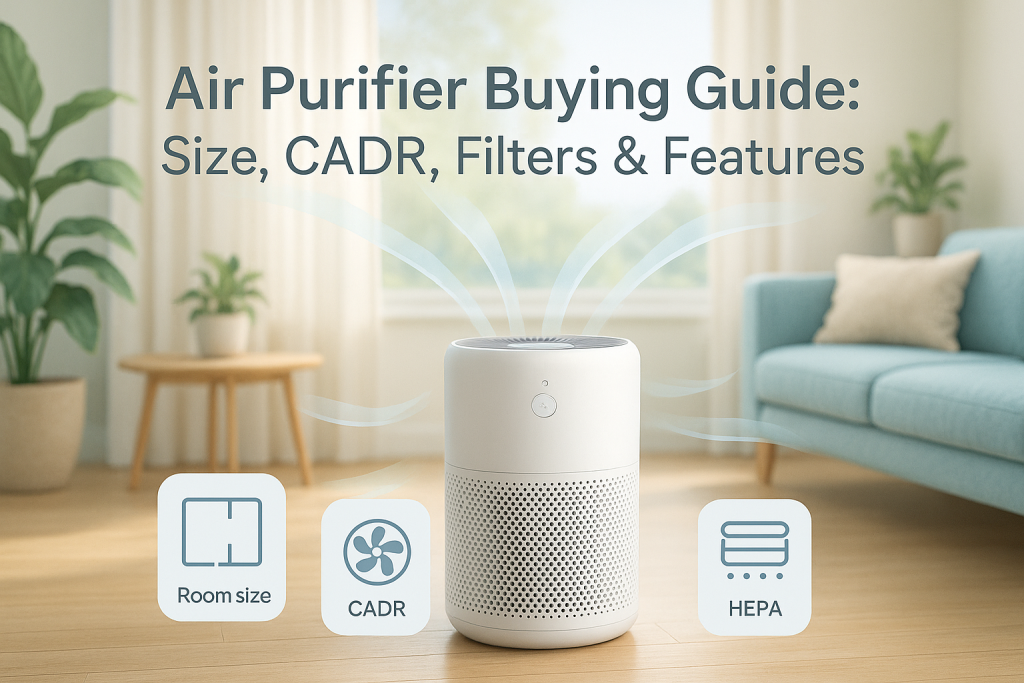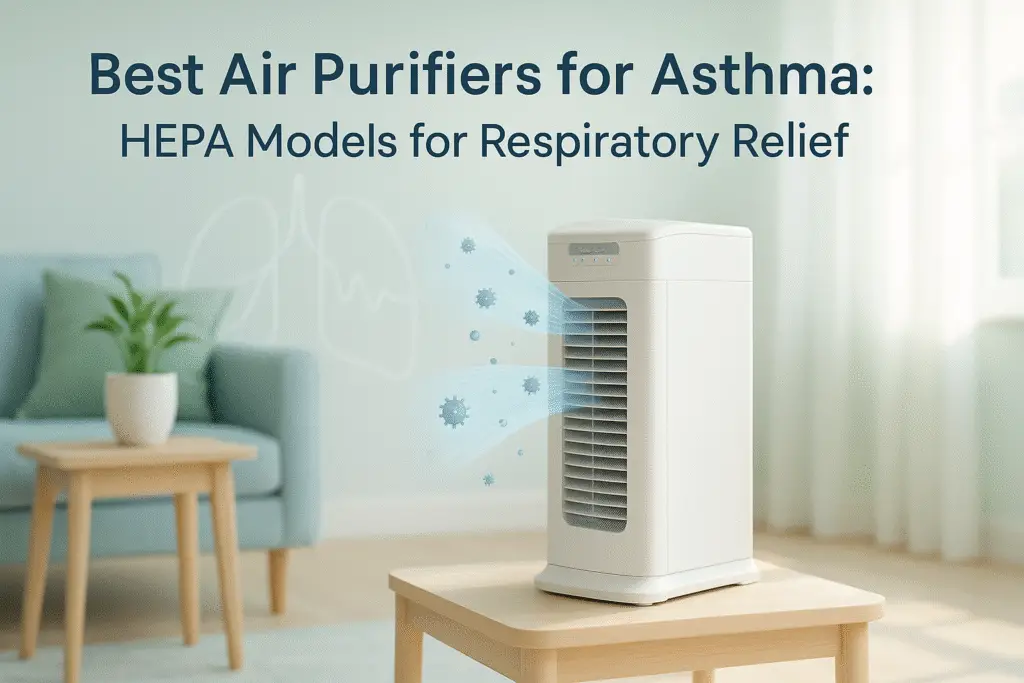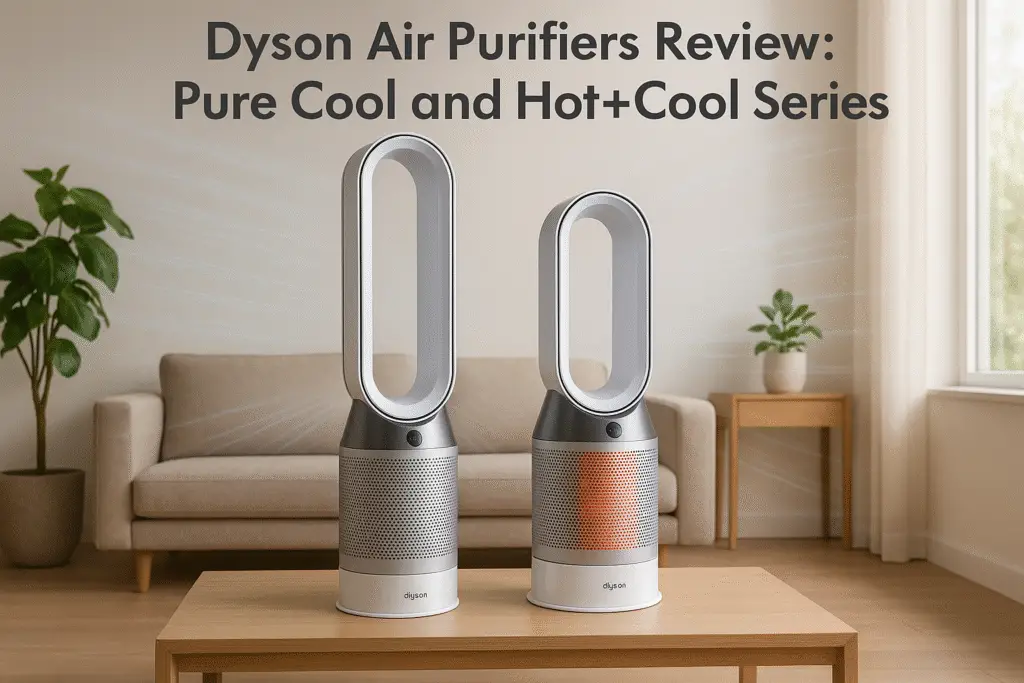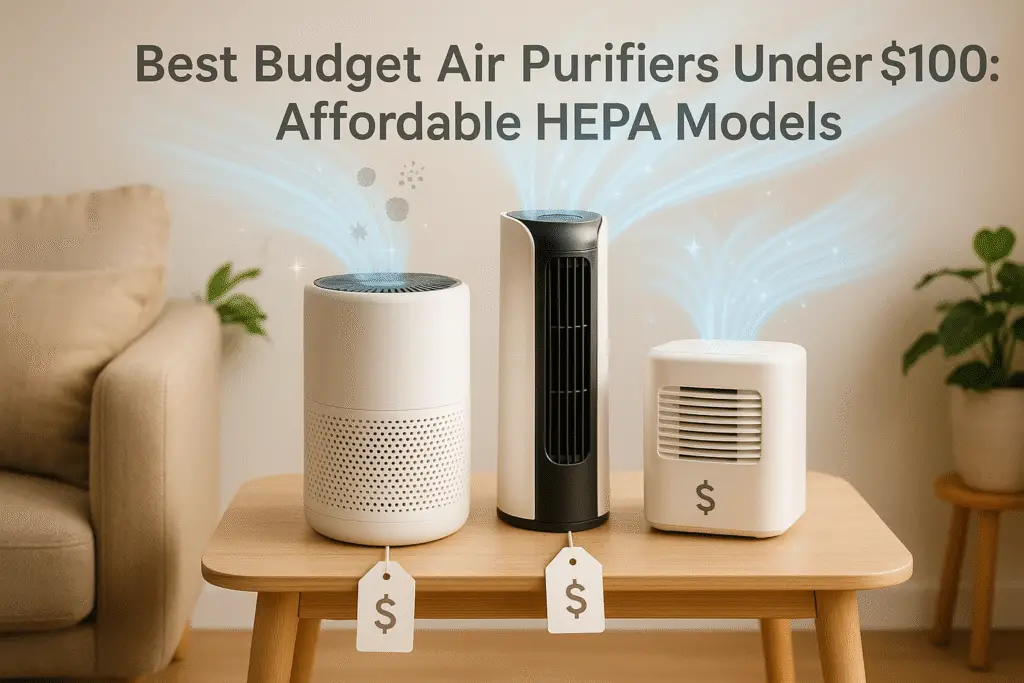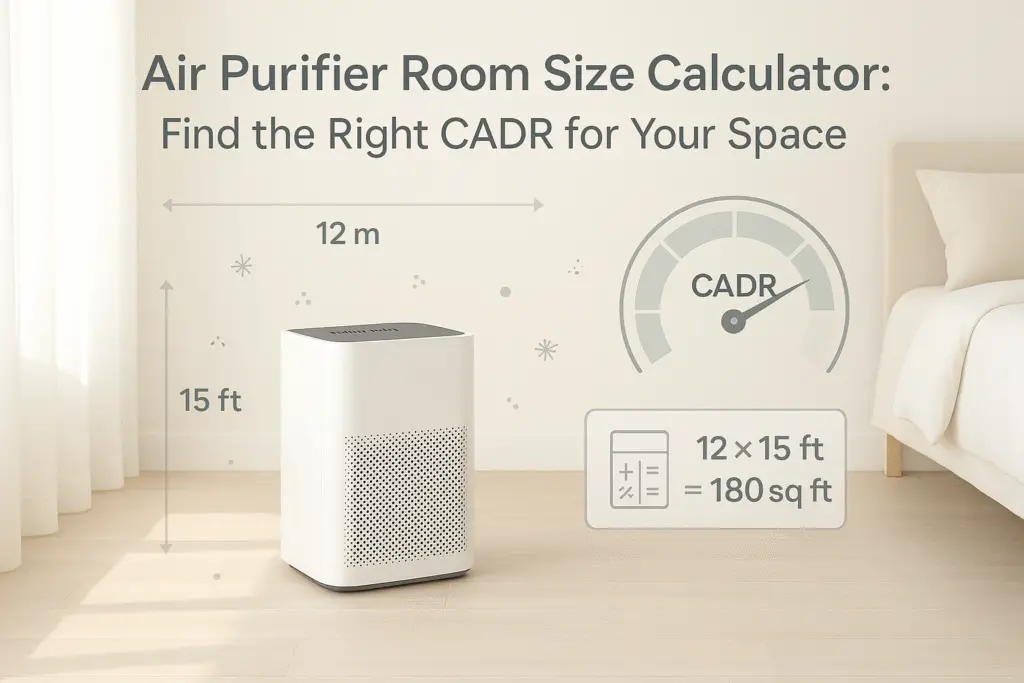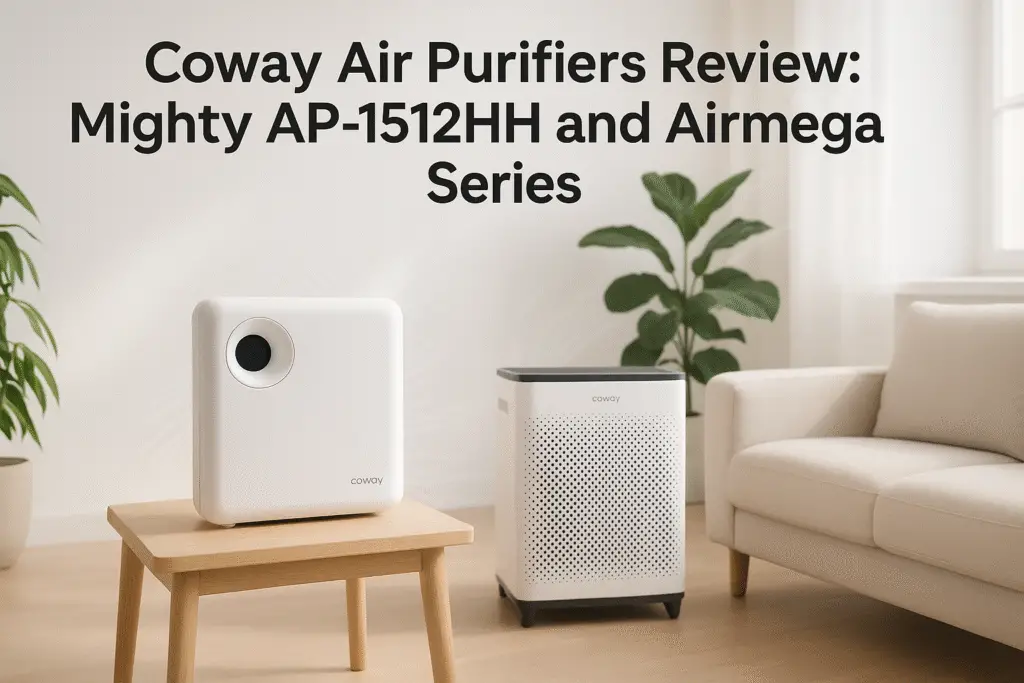Air purifiers have become essential devices for many households, but choosing the right one can be confusing due to technical specifications like CADR and ACH. Understanding these metrics is crucial for selecting an air purifier that effectively cleans the air in your space. This comprehensive guide explains these key measurements and provides a calculator to help you determine the perfect air purifier for your room size and specific needs.
Understanding CADR (Clean Air Delivery Rate)
CADR (Clean Air Delivery Rate) is the industry standard metric that measures an air purifier’s cleaning efficiency for specific pollutants. Developed by the Association of Home Appliance Manufacturers (AHAM), this rating tells you how quickly an air purifier can filter the air in a given space.
CADR is measured in cubic feet per minute (CFM) or cubic meters per hour (m³/h) and indicates the volume of filtered air an air purifier delivers. Each air purifier typically has three separate CADR ratings:
- Dust CADR: Measures efficiency for removing dust particles (0.5-3 microns)
- Pollen CADR: Measures efficiency for removing pollen particles (5-11 microns)
- Smoke CADR: Measures efficiency for removing smoke particles (0.1-1 microns)
Most residential air purifiers have CADR ratings ranging from 50 to 450 CFM. For instance, a small desktop air purifier might have a smoke CADR of 60, while a large-room model might rate 300 or higher. Understanding how CADR, CFM, and ACH metrics work together is essential for matching an air purifier’s power to your specific needs.
How CADR is Measured and Certified
CADR testing follows a standardized procedure established by AHAM, conducted in controlled laboratory environments to ensure consistent measurements across different air purifier models.
The testing process includes:
- Placing the air purifier in a standardized test chamber (12′ x 12′ x 9′)
- Introducing specific pollutants (dust, pollen, or smoke) into the chamber
- Measuring how quickly the air purifier reduces these pollutants using specialized particle counters
- Calculating the CADR by comparing the natural decay rate to the enhanced cleaning rate with the purifier running
Air purifiers that complete this testing can display the AHAM Verifide seal, confirming their performance claims have been independently verified. International standards like GB/T use similar but not identical testing procedures, which can sometimes lead to different ratings for the same device.
What is a Good CADR Rating?
A “good” CADR rating depends on your room size and air quality needs, but there are general benchmarks that can guide your selection. When shopping for an air purifier as a gift or for yourself, matching the CADR rating to the intended room size is essential for effective performance.
| CADR Range (CFM) | Rating Level | Recommended Room Size | Best For |
|---|---|---|---|
| Less than 100 | Low | Small rooms (up to 150 sq ft) | Personal spaces, small bedrooms |
| 100-200 | Medium | Medium rooms (150-300 sq ft) | Bedrooms, offices, small living rooms |
| 200-300 | High | Large rooms (300-450 sq ft) | Living rooms, open kitchens |
| Over 300 | Very High | Very large rooms (450+ sq ft) | Open floor plans, large living areas |
Higher CADR isn’t always better for every situation. A unit with very high CADR may produce more noise and consume more energy. For everyday use in average conditions, a medium CADR rating often provides the best balance of performance and livability.
Understanding ACH (Air Changes per Hour)
ACH (Air Changes per Hour) measures how many times the entire volume of air in a room is filtered each hour. This critical metric helps determine if an air purifier is powerful enough for your specific needs.
For example, an ACH of 4 means the air purifier completely filters all the air in the room four times every hour. The basic formula for calculating ACH is:
ACH = (CADR × 60) ÷ (Room Volume in cubic feet)
This formula highlights why considering cubic feet (not just square footage) is crucial. A room with high ceilings contains more air volume that needs filtering, requiring a higher CADR to maintain the same ACH as a room with standard ceiling height.
Using an ACH calculator for your specific room dimensions provides a more accurate measurement than relying on manufacturer estimates, which often assume standard 8-foot ceilings and minimal air contamination.
Recommended ACH Levels for Different Situations
Different environments and health considerations require different ACH levels to maintain optimal air quality. Understanding these recommendations can help you select an appropriate air purifier for your specific needs.
| Situation/Need | Recommended ACH | Reasoning |
|---|---|---|
| General living spaces | 2-3 ACH | Sufficient for maintaining general air quality in normal conditions |
| Bedrooms | 2-4 ACH | Provides clean air during extended exposure while sleeping |
| Allergy sufferers | 4-5 ACH | More frequent air cleaning reduces allergen concentration |
| Asthma patients | 5+ ACH | Helps maintain consistently low particulate levels to reduce triggers |
| Homes with pets | 3-4 ACH | Addresses ongoing dander and fur particle generation |
| Smoke or pollution concerns | 5+ ACH | Rapidly reduces harmful particulates during high pollution events |
According to Dr. John Smith, allergist at Respiratory Health Center, “For patients with severe allergies or asthma, I recommend air purifiers capable of at least 5 air changes per hour in bedrooms and primary living spaces. This higher rate of air filtration can significantly reduce symptom triggers.”
During critical periods like dust storms or wildfire season, you may need to temporarily increase your ACH targets to maintain healthy air quality in your home.
How to Calculate ACH for Your Space
Calculating ACH involves a simple formula that relates your air purifier’s CADR to your room’s volume. Follow these steps to determine if your air purifier provides adequate air changes for your space.
- Measure your room dimensions: Length × Width × Height (in feet)
- Calculate room volume: Length × Width × Height = Volume (cubic feet)
- Apply the ACH formula: ACH = (CADR × 60) ÷ Room Volume
For example, for a room measuring 12′ × 15′ with 9′ ceilings:
- Room volume: 12 × 15 × 9 = 1,620 cubic feet
- With an air purifier CADR of 200 CFM: ACH = (200 × 60) ÷ 1,620 = 7.4 ACH
For unusual room shapes, calculate the volume of each section separately and add them together. If your ceiling height varies, use the average height for your calculations.
Interactive Room Size Calculator for Air Purifiers
Use our comprehensive air purifier sizing calculator to determine the ideal CADR rating needed for your space. Unlike basic calculators, ours accounts for ceiling height, desired ACH, and specific health considerations.
Our calculator allows you to input:
- Room length and width (feet/meters)
- Ceiling height (standard or custom)
- Desired ACH level based on your specific needs
- Special considerations like allergies, pets, or respiratory conditions
The calculator will provide a recommended CADR range, making it easier to shop for an appropriate air purifier. You can save multiple room calculations to compare needs throughout your home and determine if a single unit or multiple units would work best.
How to Use the Calculator Results When Shopping
Once you’ve determined the recommended CADR for your space, use these strategies to find an air purifier that meets your specific needs while considering other important factors beyond just the numbers.
- Match the pollutant-specific CADR: If you have allergies, focus on the pollen CADR. For cooking odors or wildfire concerns, prioritize the smoke CADR.
- Consider noise levels: Higher CADR units often produce more noise at maximum settings. Check decibel ratings at different speeds.
- Evaluate energy efficiency: Look for ENERGY STAR certified models that deliver the necessary CADR with lower energy consumption.
- Multiple units strategy: Sometimes two medium-sized units placed strategically provide better coverage than one large unit, especially in divided spaces.
Remember that higher CADR isn’t always better if it comes with excessive noise or energy use. Finding the right balance for your specific situation is key.
Beyond the Numbers: Additional Factors Affecting Air Purifier Performance
While CADR and ACH calculations provide a solid foundation for sizing an air purifier, several additional factors influence real-world performance. Understanding these can help you optimize your air purification strategy.
Room Layout and Airflow
The arrangement of furniture, doorways, and vents affects how air circulates. An air purifier may perform below its rated CADR if placed in an area with restricted airflow or if furniture blocks air intake or output.
Building Characteristics
Older buildings often have more air leakage through windows, doors, and walls, which can introduce new pollutants continuously. This may require higher ACH levels than calculated based on room size alone.
HVAC System Interaction
Your home’s heating and cooling system moves air throughout the space, which can help or hinder air purifier performance depending on filter quality and air return locations.
Maintenance Impact
As filters collect particles, airflow decreases, reducing effective CADR. Regular filter replacement according to manufacturer guidelines is essential to maintain rated performance.
When buying an air purifier, consider these factors alongside the basic CADR and ACH calculations for a more realistic expectation of performance in your specific environment.
CADR Limitations and Common Misconceptions
While CADR is the industry standard for air purifier performance, understanding its limitations helps you make more informed decisions. Let’s address some common misconceptions about CADR ratings.
| Myth | Fact |
|---|---|
| CADR measures filter efficiency | CADR measures the combined effect of airflow rate and filtration efficiency, not just filter quality |
| CADR tests represent long-term performance | Standard CADR testing runs for only 20 minutes and doesn’t account for filter loading over time |
| CADR ratings cover all pollutants | CADR only tests three specific particle types (dust, pollen, smoke) and doesn’t measure VOC or gas removal |
| CADR directly translates to real-world performance | Real-world factors like room layout, airflow patterns, and pollutant sources affect actual performance |
According to Dr. Richard Johnson, environmental engineer, “CADR provides a useful benchmark, but consumers should understand it’s measured under idealized laboratory conditions. Real-world performance varies based on room conditions, ongoing pollutant sources, and maintenance.”
Optimizing Your Air Purifier Placement and Usage
Even the correctly sized air purifier needs proper placement and usage to deliver optimal performance. These strategies will help maximize air cleaning effectiveness in your space.
- Central placement: Position your air purifier where air can circulate freely around it, ideally near the center of the room rather than in corners.
- Elevate when possible: Placing the unit 3-5 feet off the ground often improves circulation, unless you’re specifically targeting floor-level allergens.
- Clear space around the unit: Maintain at least 2 feet of clearance on all sides, especially around air intake and output vents.
- Position strategically for specific concerns: For allergies, place the unit near the bed. For cooking odors, near the kitchen entrance.
- Adjust fan speeds according to need: Use higher settings during high-pollution events or allergy season, lower settings for quiet times like sleeping.
- Keep doors and windows closed: Air purifiers work most effectively in enclosed spaces where they can repeatedly filter the same air.
For multi-room coverage, consider using several appropriately sized units rather than one oversized unit. This approach often provides more consistent air quality throughout your home.
Comparing Air Purifier Technologies and Their CADR Ratings
Different air purifier technologies have varying strengths and limitations when it comes to CADR ratings and overall effectiveness. Understanding these differences helps you select the right type for your specific needs.
| Technology | Particle CADR Effectiveness | Gas/VOC Removal | Best For |
|---|---|---|---|
| HEPA Filtration | Excellent (measured in standard CADR tests) | Poor without additional filtration | Allergies, asthma, general particle removal |
| Activated Carbon | Poor for particles | Good for odors and some VOCs | Cooking odors, chemical sensitivities |
| Ionizers/Electrostatic | Moderate (may not show in CADR tests) | Poor | Supplementary filtration, quiet operation |
| UV-C Light | No direct particle removal | Limited effect on some VOCs | Germ concerns, must be combined with HEPA |
| Hybrid Systems | Excellent | Good | Comprehensive air cleaning needs |
Most high-performance residential air purifiers use a hybrid approach, combining HEPA filtration for particles with activated carbon for gases and odors. Some newer technologies like PECO (Photo Electrochemical Oxidation) claim advantages beyond what CADR measures, but independent verification is still catching up with these innovations.
Frequently Asked Questions About CADR, ACH, and Air Purifier Sizing
What’s the difference between CADR and CFM?
CFM (Cubic Feet per Minute) is a measurement of airflow volume, while CADR is a measurement of clean air delivery that accounts for both airflow and filtration efficiency. A unit with 100 CFM airflow might have a CADR lower than 100 if its filtration is less than 100% efficient.
Does higher CADR mean more noise?
Generally yes. Higher CADR ratings typically require more powerful fans that generate more noise. However, well-designed premium models often include better noise dampening technology to mitigate this issue.
How does CADR relate to filter efficiency?
CADR = Airflow × Efficiency. A purifier with very high efficiency but low airflow could have the same CADR as one with moderate efficiency but higher airflow. Both factors matter for overall performance.
Should I increase ACH during wildfire season?
Yes. During wildfire events, aim for 5+ ACH if possible. Running your air purifier at maximum speed and keeping windows and doors tightly closed helps maintain better indoor air quality during these high pollution periods.
Can I use multiple air purifiers to increase effective CADR?
Yes. CADR ratings from multiple units are generally additive, so two 100 CADR units would provide roughly the same cleaning power as one 200 CADR unit, with the added benefit of better distribution throughout the space.
Expert Recommendations and Conclusion
Properly sizing an air purifier using CADR and ACH metrics is essential for effective air cleaning. Let’s summarize the key takeaways and provide expert recommendations for different situations.
Dr. Maria Chen, indoor air quality specialist, recommends: “For most homes, aim for at least 3 ACH in living spaces and 4 ACH in bedrooms. Those with respiratory conditions should increase these targets by at least 50%. Always size your air purifier based on the actual room it will serve rather than manufacturer marketing claims.”
Remember these key principles:
- Match CADR to room size, accounting for ceiling height
- Consider your specific health needs when determining target ACH
- Balance performance with noise and energy consumption
- Optimize placement for maximum effectiveness
- Maintain your unit regularly to preserve CADR performance
By understanding and applying these concepts, you can make informed decisions about air purifier selection and use. The right air purifier, properly sized and placed, can significantly improve your indoor air quality and create a healthier living environment.
| Photo | Air Purifier Model | Best for | Price |
|---|---|---|---|

|
WINIX A231 Air Purifier | Asthma & Indoor Pollution | Check Price On Amazon |

|
Rabbit Air, A3 SPA-1000N Air Purifier | Pet Dander & Odors | Check Price On Amazon |

|
LEVOIT Air Purifier | Best Overall | Check Price On Amazon |

|
GermGuardian Air Purifier | Cigarette & Cooking Smoke | Check Price On Amazon |

|
Coway Airmega Air Purifier | New-borns | Check Price On Amazon |

|
BLUEAIR Air Purifier | Germ & Virus Control | Check Price On Amazon |
